Doppelgänger ◌ Spring & Fall 2014 |
|
Joint master's thesis of:
|
Media Arts and Architecture Program
|

|
|
Doppelgänger is a public communication sculpture and a sound installation realized in form of a tunnel structure. It was exhibited at Media Architecture Biennale 2014 and at Bauhaus-Universität Weimar's summaery2014. The project was partly sponsored by Kronoply, was awarded the Bauhaus-Universität Weimar's Kreativfonds, and Univeristy at Buffalo's Techne Insitute Funding. |

|
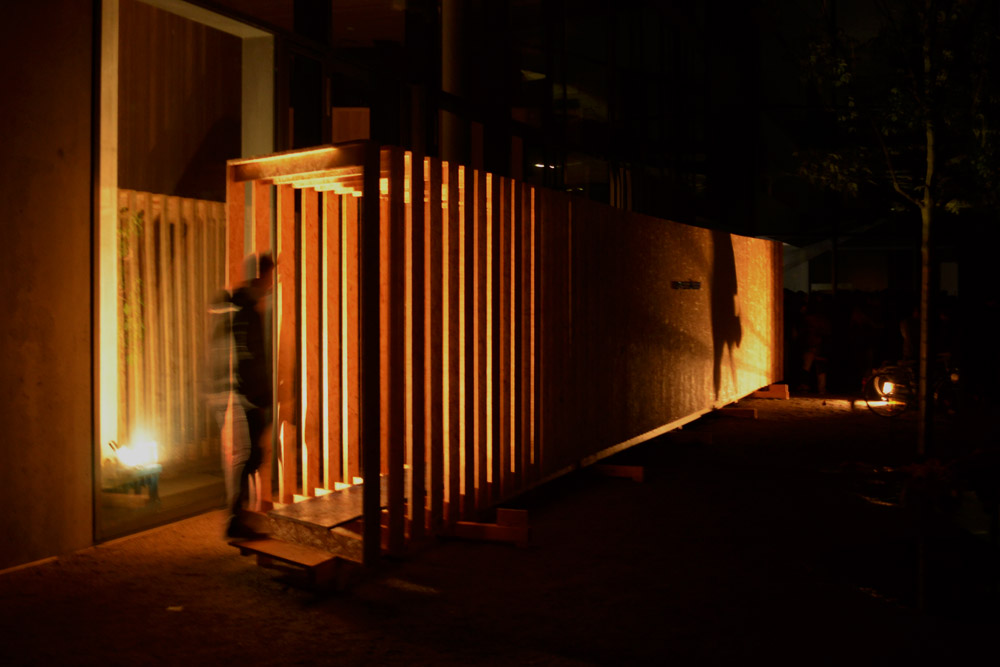
Two telematically connected tunnels at remote locations create an apparatus for meeting/communicating virtually, yet spatially perceivable, with others merely through sound of your footsteps. This happens with the aid of 16 speakers and 16 contact microphones that are built into the floor platform of each tunnel. Microphones pick up the sound of your footsteps which then gets transmitted to the other tunnel to be played back on the corresponding speakers in realtime. Two participants simultaneously enter each tunnel and walk towards each other while they only hear the other person's approaching. They meet at some point along the tunnel and then pass through each other as it is only wide enough for one person in the middle.
|
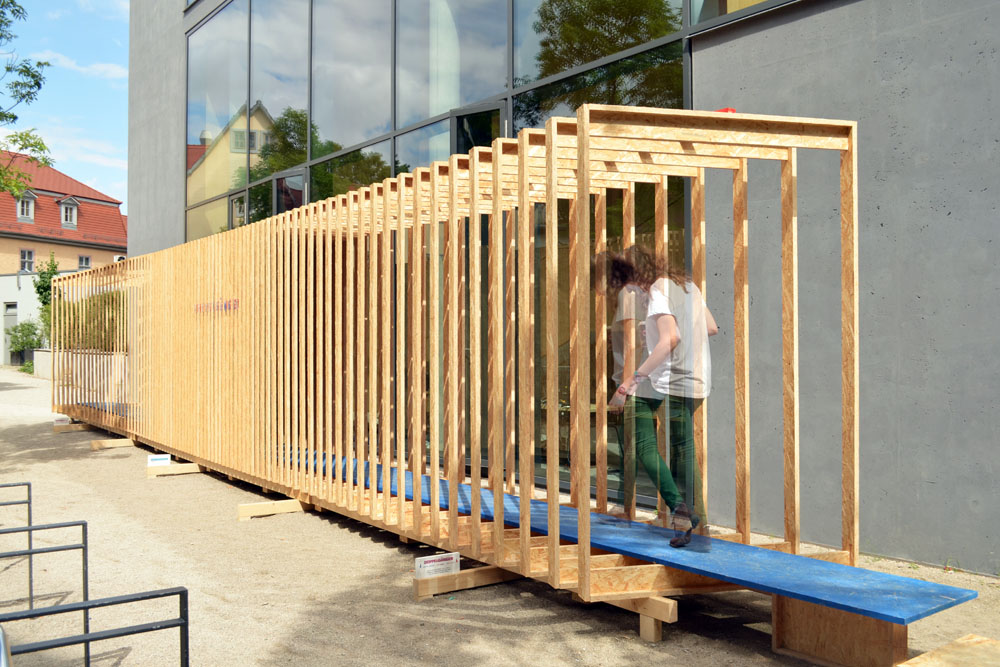
Doppelgänger investigates the communicative qualities of human gait, as a counterpoint to existing visual, verbal and textual communication protocols. It introduces subtle, culturally varying aspects of situated interactions to digital communication media, and reevaluates the potential of walking as an embodied, contextualized mode of interacting and being in the world. Doppelgänger also features a standalone mode which uses the array of speakers to create interactive spatial sonic experience using multi-layer sound samples (e.g. a freight train that sweeps through the tunnel as a visitor enters). This project is a work in progress. Please excuse the rawness of the documentation. |
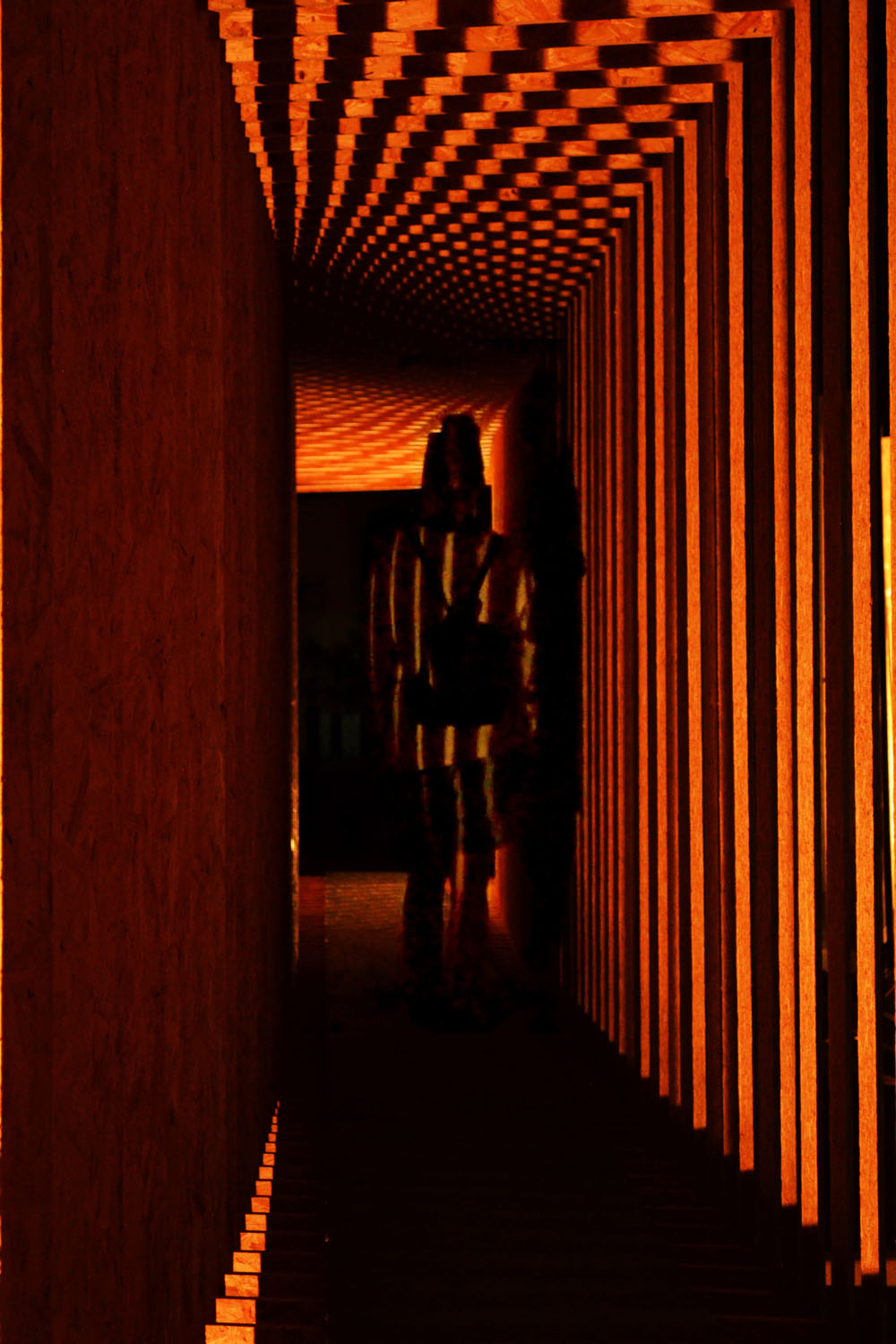
|
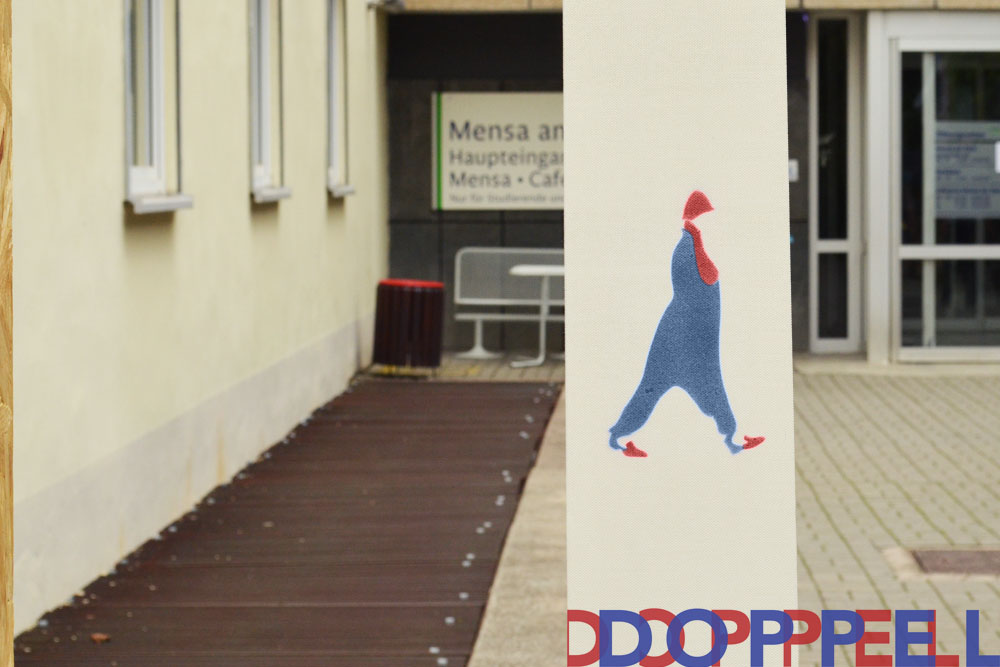
|
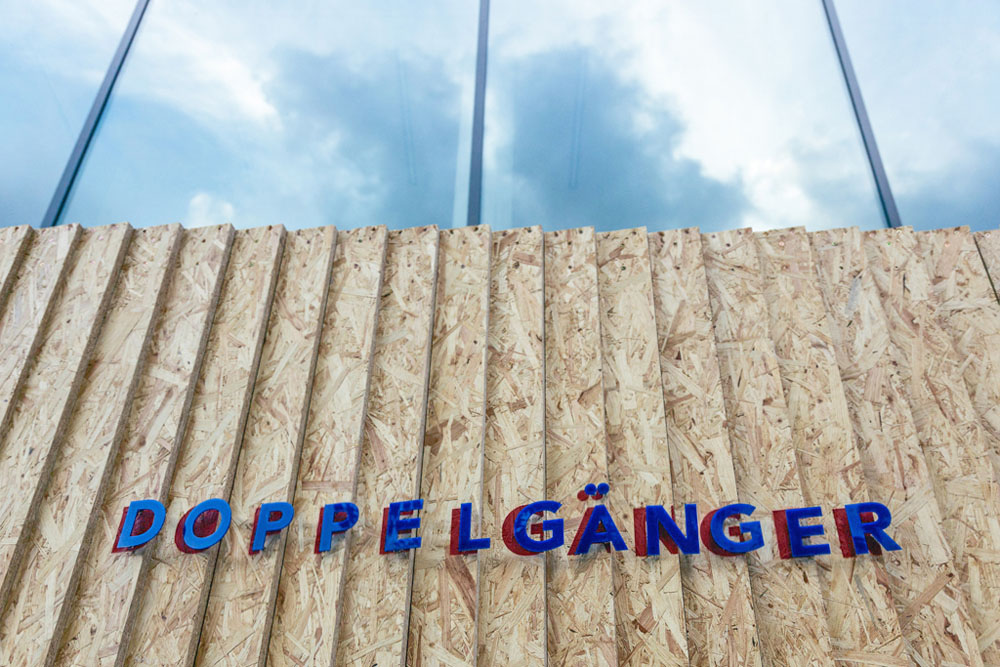
|
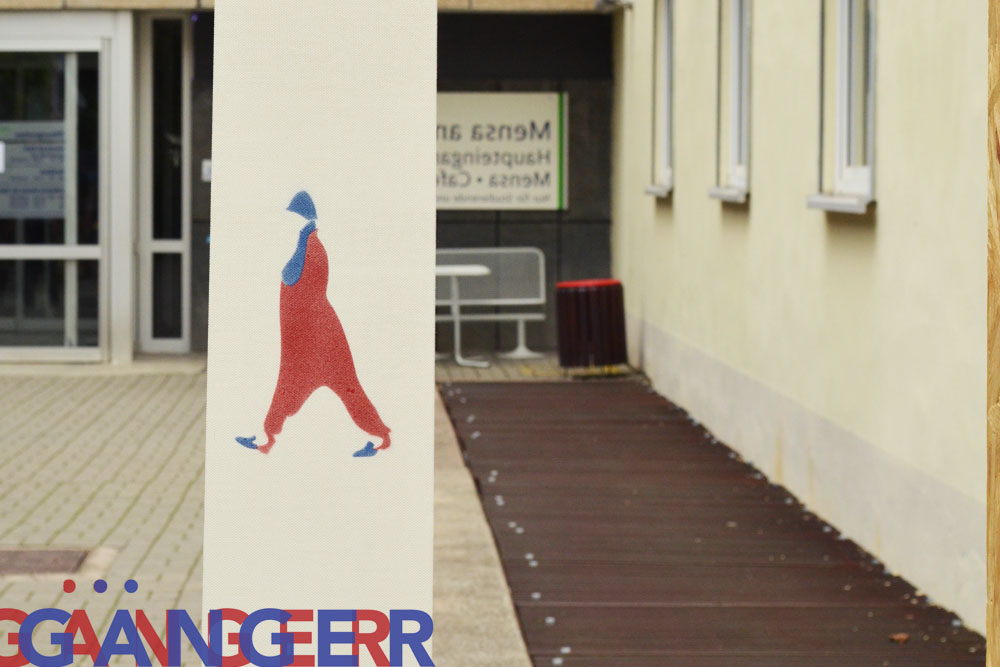
|
Phase I |
|
Due to time and money constraints only one tunnel could be constructed in this phase which was located at the courtyard of Bauhaus University Library. Therefore, a catwalk was built and placed at a distant location to replace the second proposed tunnel in Buffalo. The catwalk incorporated the same number of microphones and speakers which would make it function identical to the built tunnel. The architectural design of the tunnel is an attempt to create thresholds of isolation/concentration both visually and acoustically. The first phase allowed for studying visitor engagement and evaluation of technical efficacy and overall experience. |
|
|
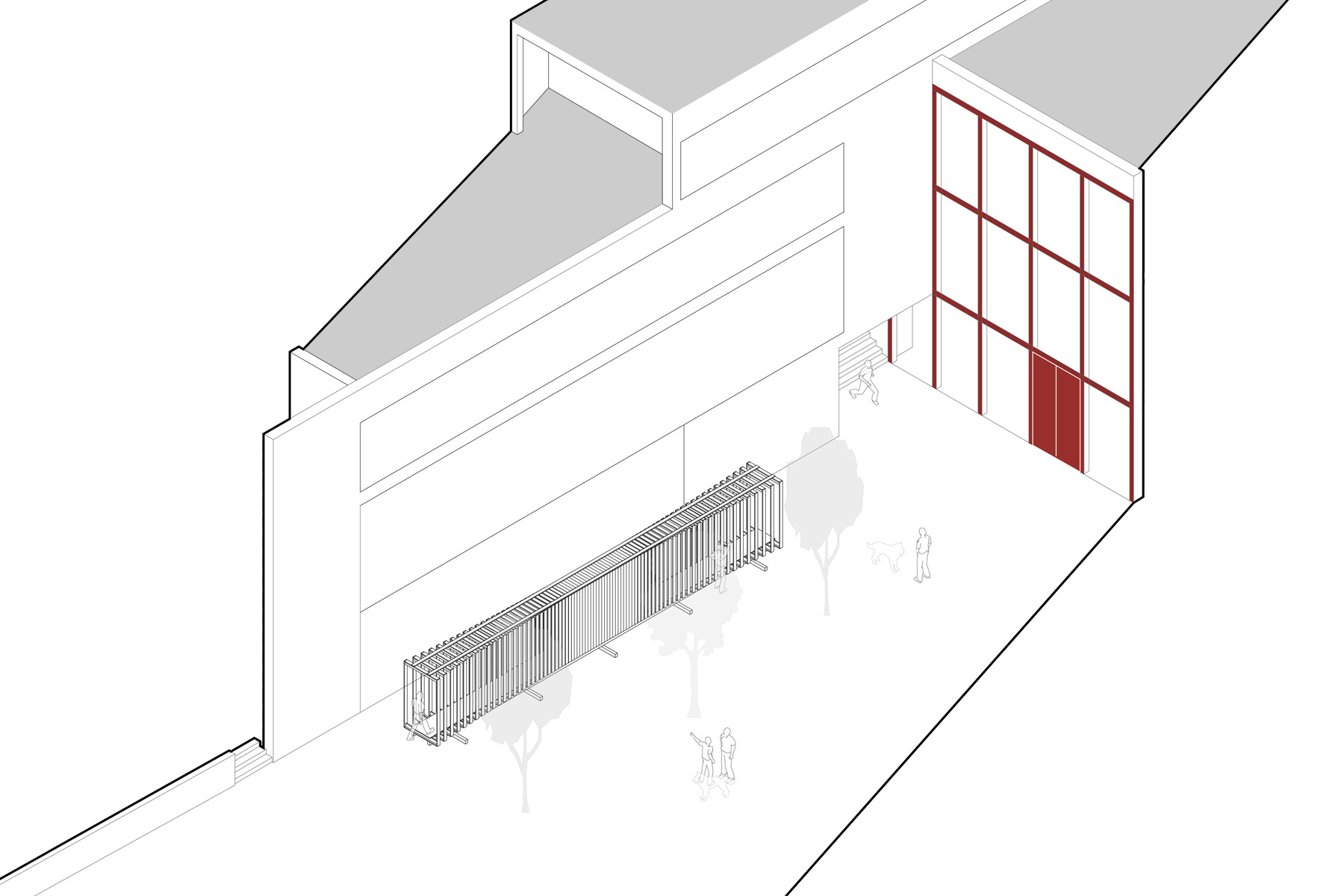
|

|

|

|

|

|
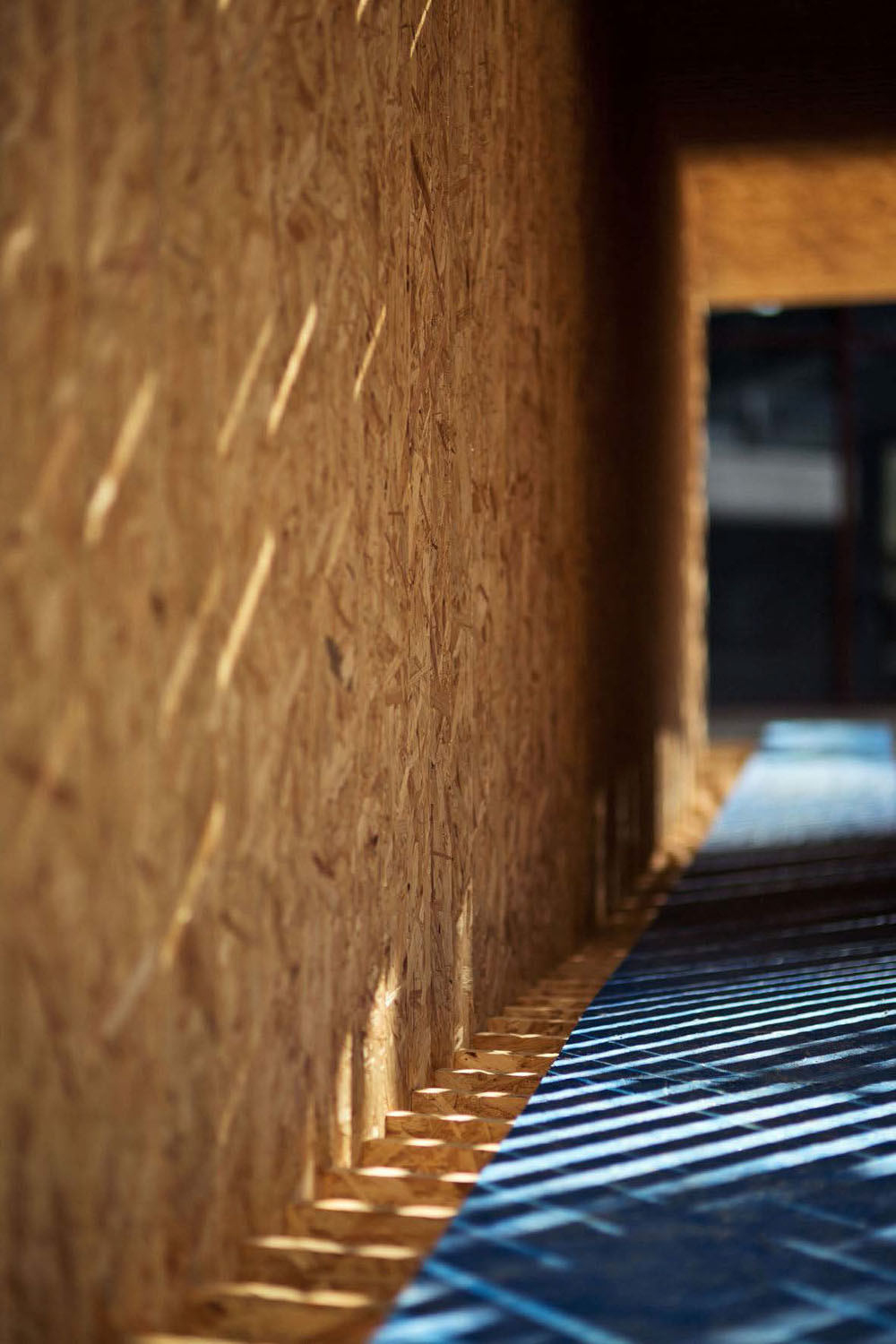
|

|

|
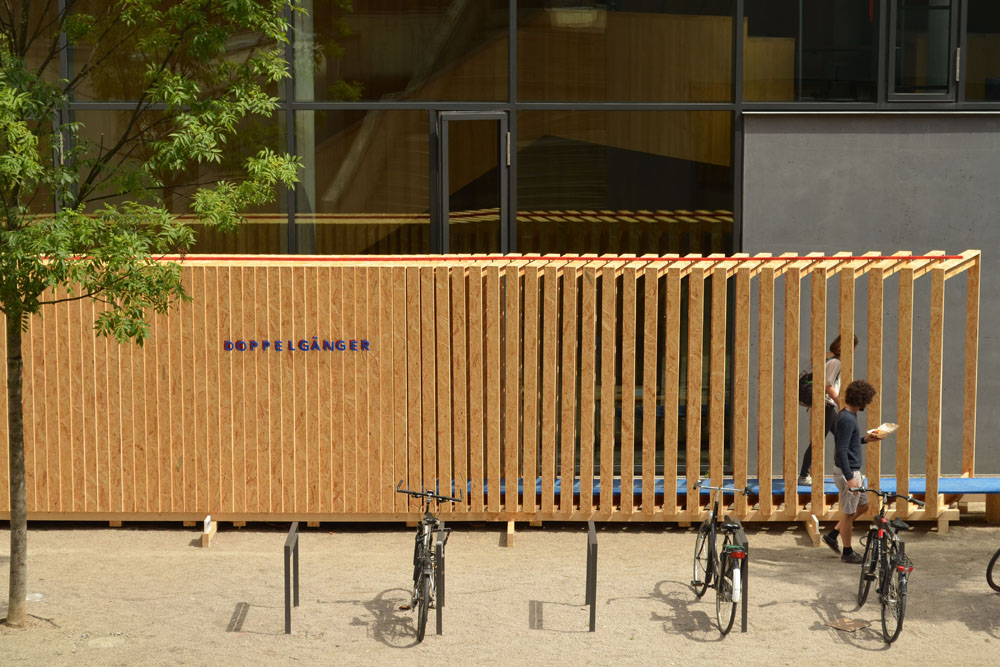
|
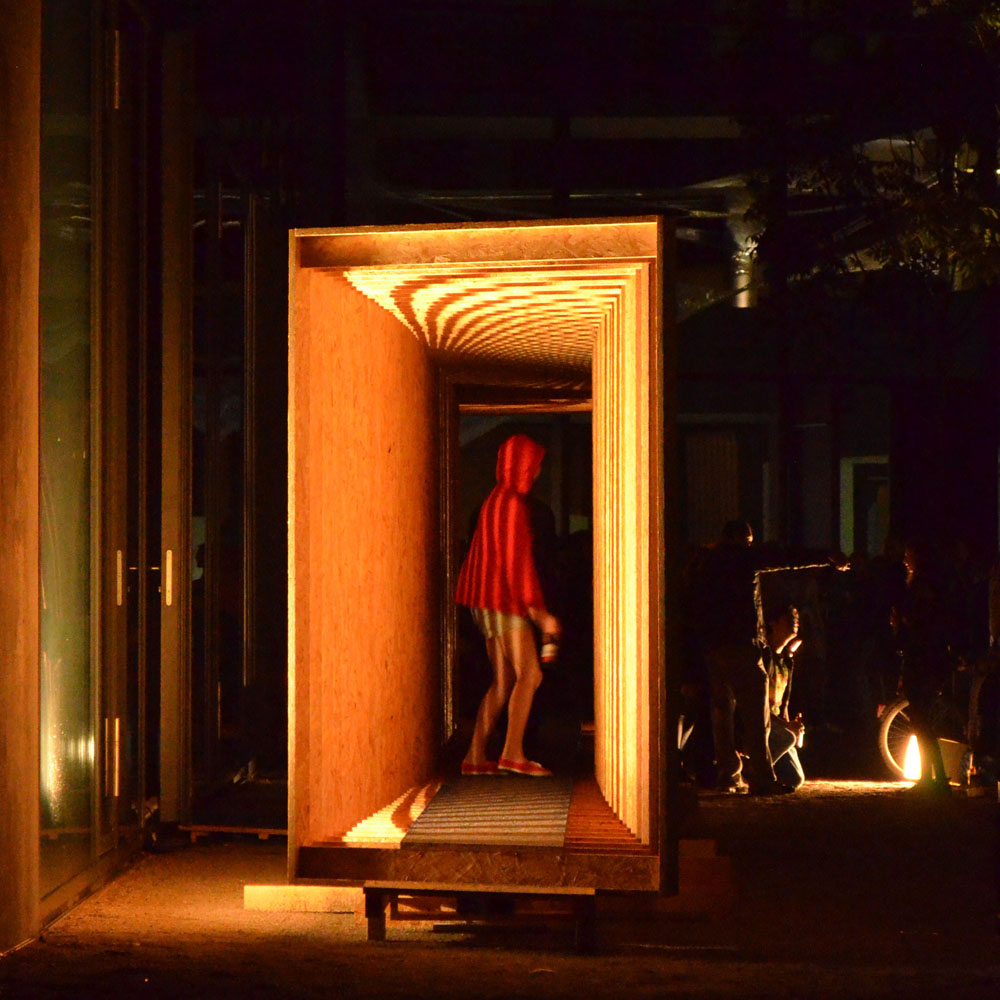
|

|
Phase II |
|
Exhibited as part of Media Architecture Biennale 2014. |
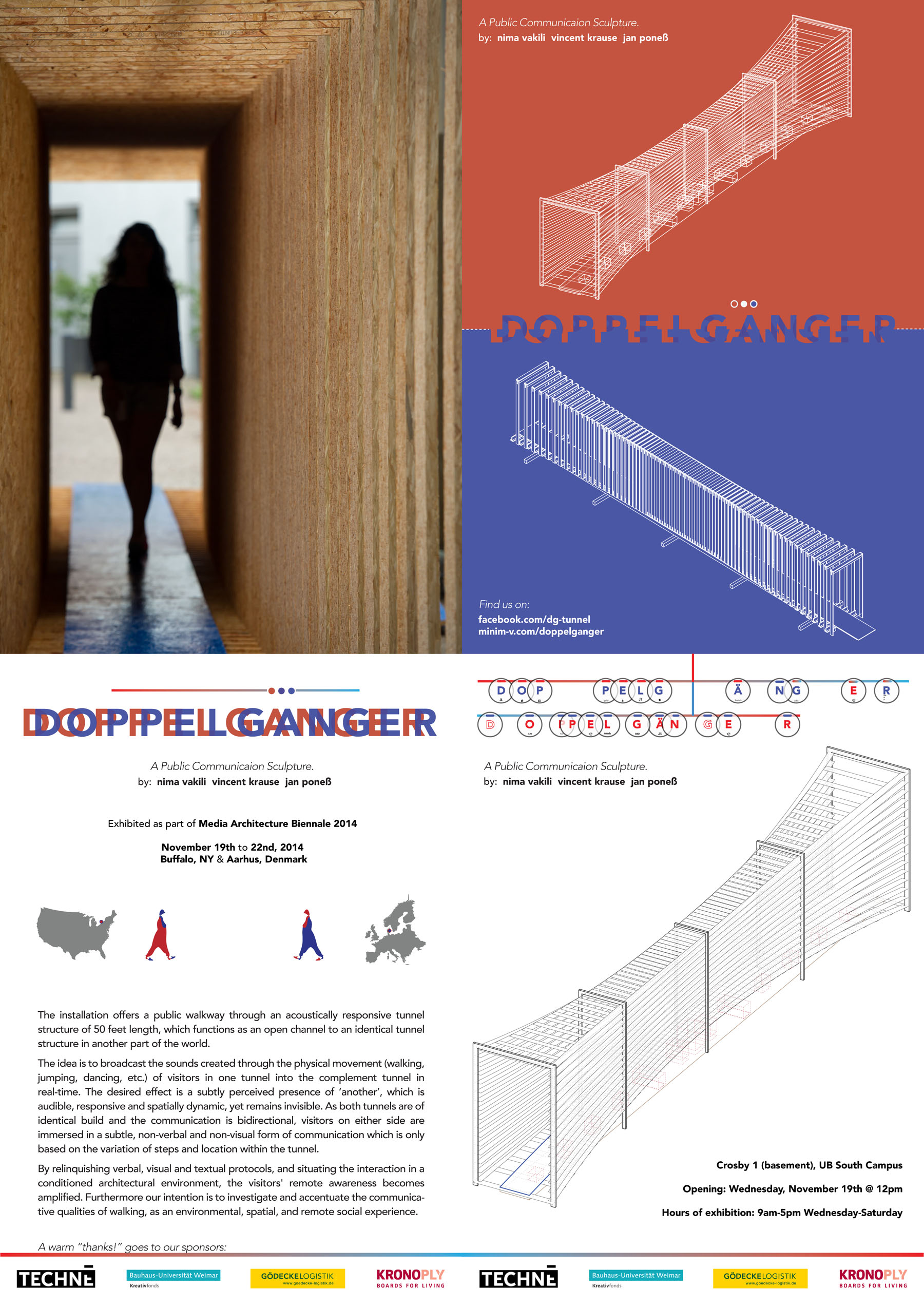
|
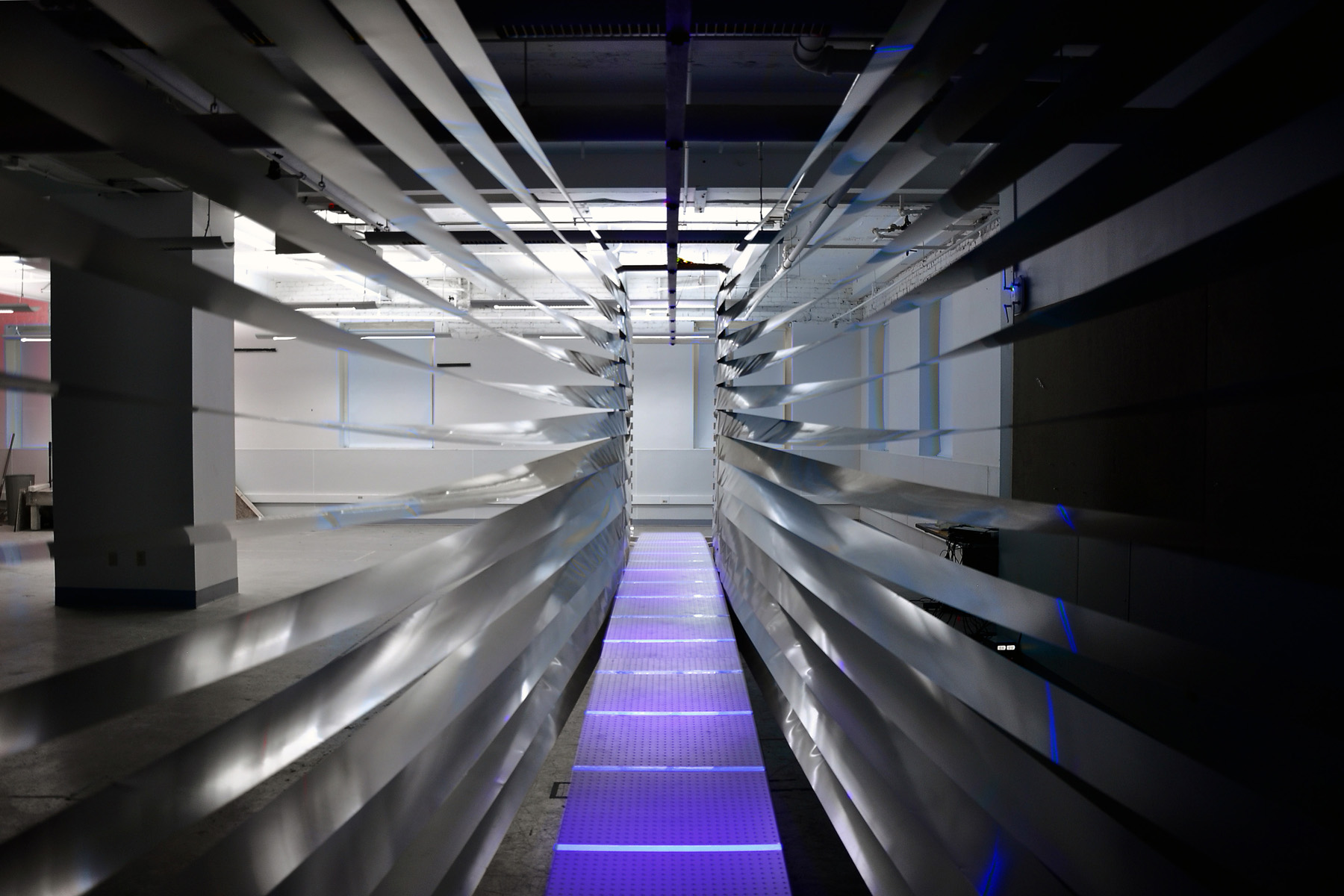
|

